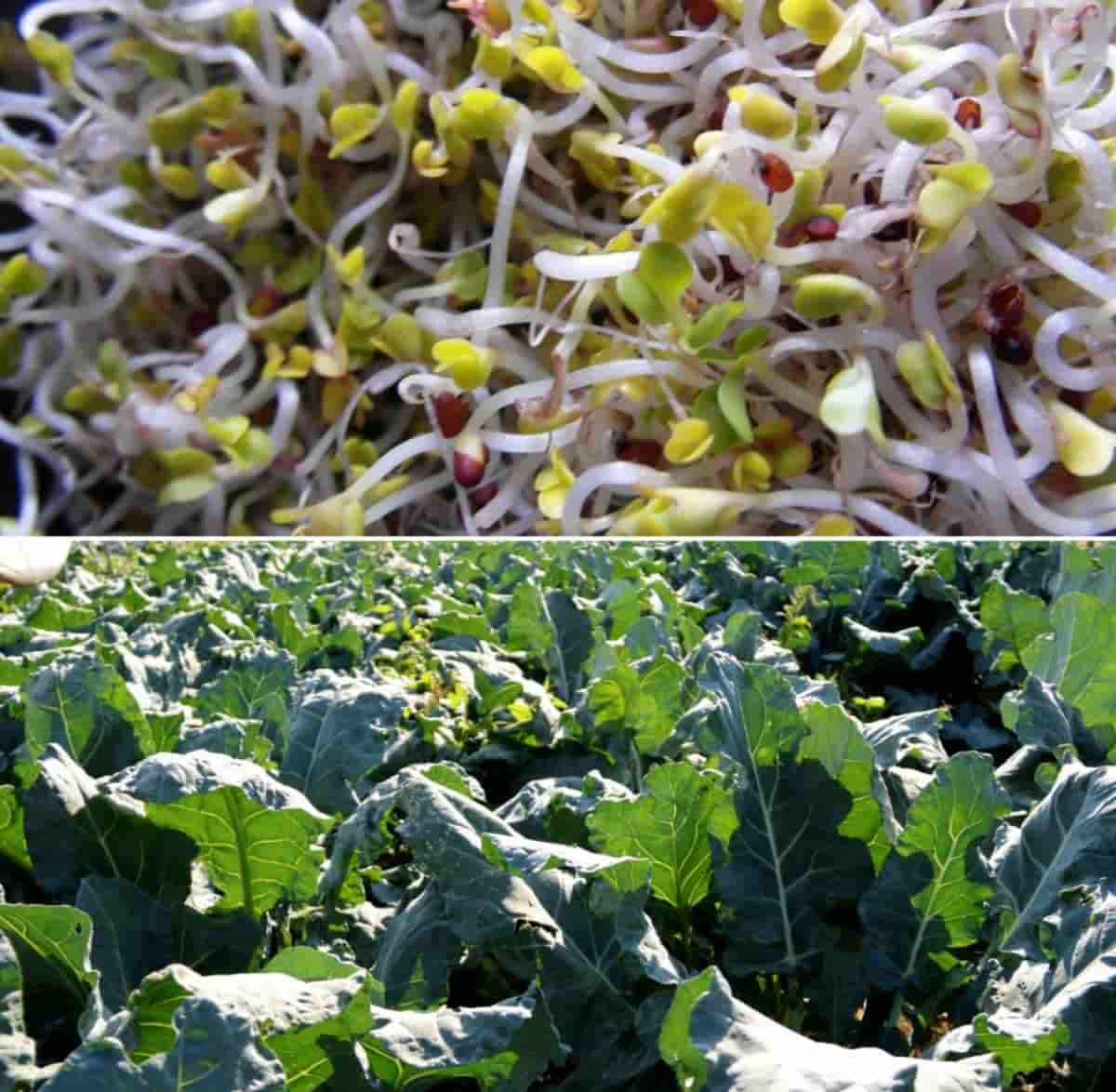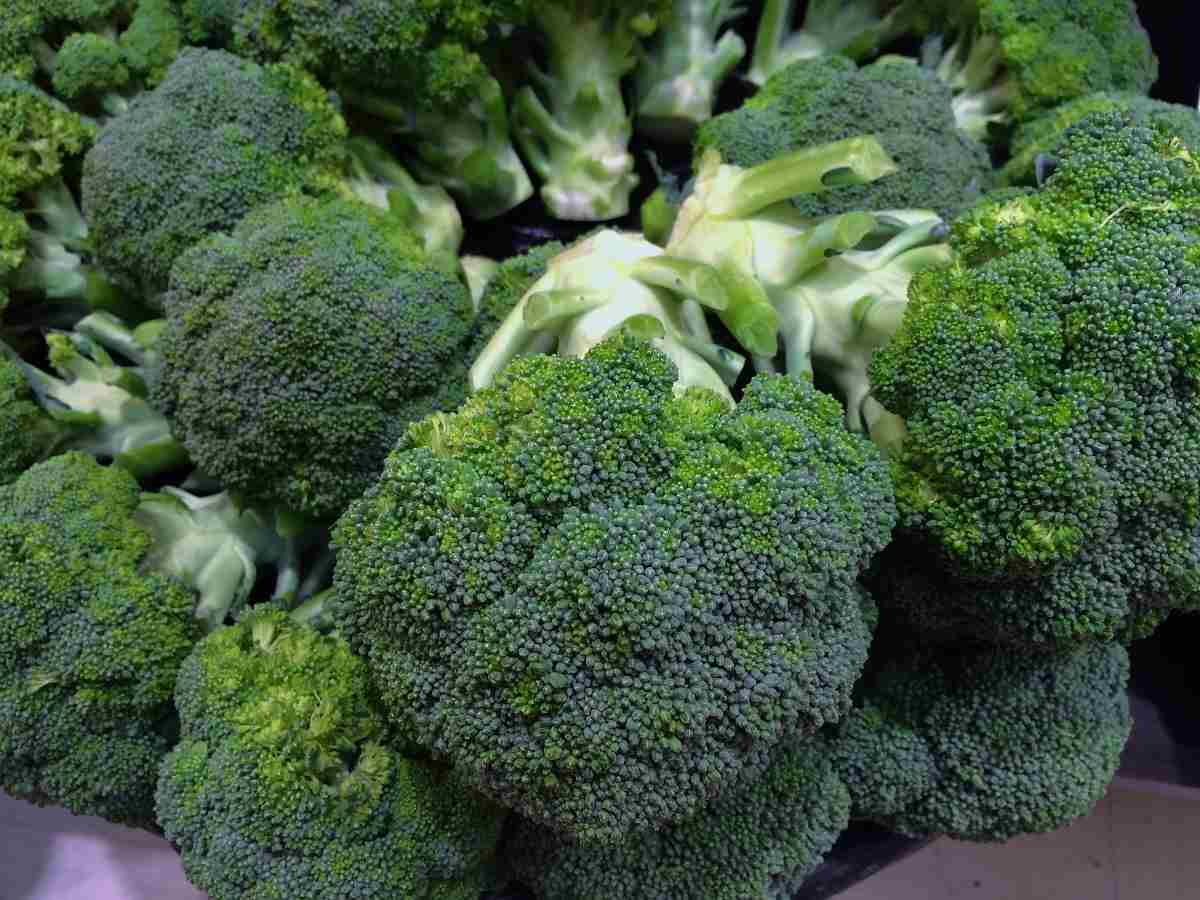Introduction to organic Broccoli cultivation
Broccoli (Brassica oleracea) is a cool-season crop that requires moderate temperatures for optimum plant growth and quality; it performs poorly in hot weather. Though, organic Broccoli farming offers one of the most sustainable farming systems with recurring benefits to only long term soil health, but also provides lasting stability in production by importing better resistance against different biotic and abiotic stresses. Further, the organic manures can serve as alternative practices in place of fertilizers for improving the structure of the soil, microbial biomass, minimizing global warming, and producing quality crop yield.
A step by step guide to the cultivation of organic Broccoli
For growing organic Broccoli, once daytime temperatures have reached a steady 15°C or warmer, consecutive plantings can be direct-seeded into your garden up until summer. To avoid crop damage from severe temperature fluctuations, we recommend planting and growing Broccoli 5 to 6 weeks before your last frost date. Broccoli is an important cole crop belongs to the Brassicaceae family. There are three classes of Broccoli, i.e. green, purple and white, among them green type Broccoli is the most popular.

Broccoli can be grown on a wide range of soil types, ranging from light sand to heavy loam or, even clay soil that is well supplied with organic matter. The successful production of organic Broccoli depends on various factors. Fertilizer management is the most important factor, which assured Broccoli crop production. Organic manure is a source of food for the innumerable number of microorganisms and creatures like earthworm who breaks down these to micronutrients, which are simply absorbed by the plants. Organic manures play the main role in plant growth as a source of all necessary macro and micronutrients in available forms during mineralization and improving the physical and chemical properties of soils. Some organic manures such as cow dung, poultry manure, vermicompost and spent mushroom compost (SMC) improves the soil structure, aeration, slow-release nutrient which support root development leading to higher growth and yield of Broccoli. Organic Broccoli farming is a good source of income. This guide helps in how to grow Broccoli complete step by step organic Broccoli cultivation procedure;
Different types of Broccoli for organic cultivation
Large-headed Broccoli varieties produce the familiar domed heads that are composed of numerous clustered florets. Many large-headed plant varieties produce smaller side shoots after the primary head is harvested.
Sprouting varieties grow into bushier plants that make numerous small heads. These plant varieties are at their best when grown from fall to spring in mild winter climates.
Romanesco Broccoli varieties produce elegantly swirled heads composed of symmetrically pointed spirals. These large plants require plenty of space, excellent soil, and good growing conditions to do well.
Broccoli raab is grown for its immature flower buds, and which have a stronger flavor than regular Broccoli.
Preparing the soil for organic Broccoli cultivation
Broccoli crop is a heavy user of nitrogen. In the fall, work into your soil generous amounts of organic matter (such as autumn leaves) and manure. The best soil for Broccoli in well-drained fertile soil that’s high in the organic matter doesn’t overfeed with nitrogen though because that can cause a disorder called hollow stem some compost and an organic vegetable fertilizer must be enough for your Broccoli crop.
The pH for growing a healthy Broccoli crop needs to be around 7.0. Using lime will help to raise the soil pH levels if they are low. For Broccoli production, the ideal temperature required 25°C to 26°C during the day and 16°C to 17°C in the night. It’s important to prepare your soil properly before planting. The soil must be rich with organic material, but loose enough to work with. Add a mixture of one part compost and one part sand to keep the soil rich and also well-drained.
Broccoli crop is a cool-season annual plant that requires full sun and regular water. It grows best in loose, fast-draining, and fertile soils and digs in a legume cover crop or 30 lbs of organic compost per 100 square feet during the season before planting. Since the Broccoli crop is a heavy feeder, it thrives after a legume crop, such as peas. And, well balanced organic soil that is rich in nutrients will prevent many Broccoli pests and diseases.
Where to plant Broccoli
- Broccoli likes full sun in the spring
- When planting in early summer for a fall crop, find a place that provides some afternoon shade such as behind corn, or another tall crop
- Artificial shade can also be used
- A thick cover of mulch will keep your soil cool. These measures (afternoon shade or mulching) will help your Broccoli not to bolt
Spacing and depth of Broccoli plants
Plant seeds about 1/4 to 1/2 inch deep, or set the transplants slightly deeper than they were originally grown. Plant or thin Broccoli seedlings 12 to 15 inches apart in the row; allow 36 inches between each row. Broccoli plants grow upright, often reaching a height of about 2 1/2 feet.
The seed rate and spacing of Broccoli
In case if you miss this: Cold Storage Subsidy, Loan, and Business Plan.

A spacing of about 45 × 45 cm between row to row as well as a plant to plant should be followed for the successful cultivation of Broccoli. Though, planting distance varies according to the variety, climate, and soil.
A seed rate of about 600-650 g is sufficient for the cultivation of Broccoli in the one-hectare area.
Organic nutrient management for Broccoli
Monthly supplements of compost tea and fish emulsion, along with a liquid organic leaf spray will help to feed your nutrient hungry Broccoli crop. Nutrient management particularly organic manures and biofertilizers based on the soil test results. If the dosage of nitrogenous fertilizers is too high the crop becomes too succulent and then susceptible to insects and diseases. If the dosage is too low, the Broccoli crop growth is retarded. So, the farmers should apply adequate for the best results. The phosphatic fertilizers should not be applied every season as the residual phosphate of the previous season will be obtainable for the current season also.
Organic fertilizers break down slowly than synthetic fertilizers, so fewer chemicals runoff into nearby waterways. Crops such as Broccoli need regular fertilization but gardeners should avoid the overuse of fertilizers that can cause “eutrophication,” an overgrowth of plant life that can cause fish kills in rivers and streams. Use fertilizers only as directed and some communities restrict the use of phosphorus-containing fertilizers.
Broccoli is a heavy feeder, and plants take up nutrients best when the soil pH level is 7.0. Choose a sunny site with fertile and well-drained soil. Loosen the planting bed and mix in up to about 1 inch of mature compost. Unless your soil is fertile, also mix in a high-nitrogen organic fertilizer such as alfalfa meal or composted poultry manure. Water the bed thoroughly before setting out seedlings. Allow 18 to 20 inches between plants and dwarf varieties can be planted 12 inches apart.
Pest management of Broccoli organically
Covering young Broccoli plants with a floating row cover will protect them from cabbage worms, flea beetles, and root maggots. Paper collars and barriers located around the stem of each plant, on the soil surface, will deter cutworms. Damping-off disease is a common problem with seedlings. Remove and destroy all infected Broccoli plants.
Broccoli is prone to a disease known as clubroot. Clubroot attacks the root structure and causes it to deform into gnarly knots and nodules, which hurts the plant roots’ ability to uptake water and nutrients. To prevent clubroot you should compress the soil where you want to plant, this removes air gaps that lead to the disease. Dig a trench about 2 inches deep and then lightly compress soil down with your foot or by pressing firmly with your hand. The soil must still be crumbly when moved but have a noticeable density from the reduced air pockets.
Insect pests can be the main problem in Broccoli production, especially in summer plantings for fall harvest. Damage to transplants and older Broccoli plants can result from cutworms, imported cabbageworm, cabbage looper, diamondback moth larvae, and cross-striped cabbage worm. Marketability is reduced when insects feed on plant leaves and heads. Early detection is critical for controlling these pests and scouting to monitor populations can help growers determine when and how often pesticides should be applied.
Oil Spray
For those annoying sap-sucking insects such as aphids, thrips, spider mites and whiteflies make a homemade oil spray using 1 tablespoon of dish soap and 1 cup of cooking oil from a newly open bottle of oil. This concentrated liquid should be mixed with water before use with a ratio of 4 teaspoons of oil mixture to 1 pint of water. Until you are ready to use it and store the concentrated oil mixture in a glass jar in a dark, dry, and cool location. Apply a liberal mist of the homemade oil spray to the vegetables once every 7 days to thoroughly control the pests.
Garlic Spray
The strong scent of garlic keeps certain pests from feeding on vegetables. For this organic pesticide, combine 10 to 12 garlic cloves with about 1 quart of water in a blender. After blending, allow the mixture to sit for 24 hours and then strain it through cheesecloth covering the opening of a glass jar and add 1 cup of cooking oil. Then, this concentrated mixture can be stored for several weeks until ready to use. For an even more powerful homemade pesticide, and then add 1 tablespoon of cayenne pepper to the concentrated mixture and let it soak for another 24 hours before straining the liquid once again. When ready to use, dilute about 1/2 cup of the liquid with 1 gallon of water.
Organic Pesticides for Broccoli cultivation
Bt or Bacillus thuringiensis is a bacterial disease organism, kills all kinds of caterpillars and worms by attacking the lining of the gut, causing the insect to starve. It is completely safe for humans and wildlife, it doesn’t harm beneficial insects. Spray the plant leaves thoroughly with Bt. Once the cabbage worms eat the sprayed leaves, they die within 2 to 4 days, although they stop feeding on leaves almost immediately. Spray aphids and flea beetles with insecticidal soap.
Bacillus thuringiensis is a biological-type insecticide that controls most types of worms. Bt is a naturally occurring bacteria that is only harmful to the larval stage of loopers and diamondback moths. The material must be eaten by the worms, and it takes 2 to 3 days before the worms are killed. Use 1 to 2 drops of a liquid detergent per gallon of spray mixed to ensure adequate wetting of the waxy leaf surface. Then, this is a well-established method of organic vegetable production.
When you grow Broccoli organically you get white and sulfur cabbage butterflies laying their eggs on the plants. These eat the plant leaves and turn into little green or yellow worms. The color of the offspring varies depending on where you live. Bt is a microbial insecticide that can be used effectively against most types of Broccoli pests and is the main component of organic production. Many other organic insecticides and non-organic insecticides are available for use. Several plant diseases (black rot, blackleg, and downy mildew) can result in yield losses. A good crop rotation program and the use of certified disease-free resistant varieties will help in the prevention of many of these diseases. Fungicide or bactericide sprays may also be necessary when pathogens are present and conditions are favorable for infection. Bacillus thuringiensis is a naturally occurring bacterium for insect control which is approved for use in organic gardens. You can spray with Bt to kill the bugs, but that leaves a residue on the plant. Harvest the Broccoli and deal with the little green caterpillars after harvest.
The procedure for Broccoli harvesting
You may also check this: Hydroponic Farming Business Plan, Hydroponic Yield.

After 80 to 90 days of transplanting crop ready to harvest. Harvest Broccoli when it Heads become 3 to 6 inches size with a sharp knife also this crop should be harvested before small flower open present on the Broccoli crop heads. A good quality Broccoli crop Heads weight is around 250 to 300 gm.
Commonly asked questions about the cultivation of organic Broccoli
What is the difference between organic Broccoli and regular Broccoli?
Regular Broccoli grown using conventional agricultural methods does not appear to have high levels of pesticides. There is no significant difference between organic and non-organic Broccoli in terms of how much vitamin C and sulforaphane they provide.
Is organic Broccoli better?
It’s healthier because that organic produce has more nutrients than its conventional counterparts, probably because the soil is left in better condition after repeated plantings; and healthier because avoid ingesting any harmful pesticide residues left on conventional produce.
Do Broccoli sprouts need to be organic?
Focus your efforts on finding organic Broccoli sprouting seeds and organic is key for growing fresh sprouts and microgreens because you don’t want to use seed that’s been treated with fungicides. And you don’t want to grow sprouts from Broccoli seeds grown using conventional pesticides or herbicides.
How often should broccoli be watered?
Broccoli likes steady moisture to grow fast and produce good heads, so water regularly, and applying 1 to 1.5 inches of water per week if rain doesn’t cover it.
In case if you are interested in this: How to Make Money from Organic Farming Business.
Mr. Reddy i am very happy to know that being an IT professional you choose a field of your interest. your article inspired a lot of engineers coming out from the same background. hope your success.